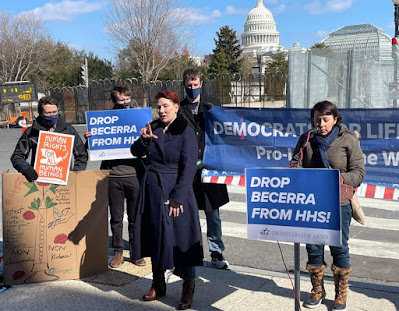Evidence that abortion restrictions decrease *total* abortion rates (not just legal abortion rates).
[Update December 2021 – We have recreated and added to the below list here: https://secularprolife.org/abortion-rates/]
When I tell pro-choice people abortion restrictions decrease abortion rates, one of the most common responses is “They only decrease legal abortions. Women just start getting abortions illegally.”
This is a half-truth. The true half is that there will always be a nonzero number of women willing to seek illegal abortion. The false half is that abortion restrictions have no effect on total (legal + illegal) abortions. In fact abortion restrictions decrease total abortion rates.
While illegal abortions may be difficult to quantify, births are more straightforward. If it were true that all women who want abortions obtain them regardless of the law, we would expect abortion laws to have no relationship to either total abortion rates or birth rates. That’s not the case. Below is a list of research (with links to the original articles) that examines abortion laws in relation to birth rates, fertility rates, unintended births, and other metrics which preclude the “off-the-books abortions” argument. (Please note this list is a subset of our longer list of evidence suggesting abortion restrictions decrease abortion rates.)
***
“Analysis of statewide data from the three States indicated that following restrictions on State funding of abortions, the proportion of reported pregnancies resulting in births, rather than in abortions, increased in all three States.” Trends in rates of live births and abortions following state restrictions on public funding of abortion. Public Health Reports, December 1990
“The decline in geographic access to abortion providers during the 1980s accounted for a small but significant portion of the rise in the percentage of women heading families.” State abortion policy, geographic access to abortion providers and changing family formation. Family Planning Perspectives. December 1998
“States legalizing abortion experienced a 4% decline in fertility relative to states where the legal status of abortion was unchanged.” Roe v. Wade and American fertility, American Journal of Public Health, February 1999
“Our results indicate that much of the reduction in fertility at the time abortion was legalized was permanent in that women did not have more subsequent births as a result.” Abortion Legalization and Lifecycle Fertility, The Journal of Human Resources, 2007
“Overall, the results show that laws that increased minors’ access to abortion in the 1960s and 1970s had a larger impact on minors’ birthrates than laws that increased oral contraceptive access.” Fertility Effects of Abortion and Birth Control Pill Access for Minors, Demography, November 2008
“Approximately one-fourth of women who would have Medicaid-funded abortions instead give birth when this funding is unavailable … Studies have found little evidence that lack of Medicaid funding has resulted in illegal abortions.” Restrictions on Medicaid Funding for Abortions: A Literature Review, Guttmacher Institute, June 2009
“Robustness tests supported the association between access to abortion and decreased birthrates, while the relationship between access to the pill and birthrates received less support.” Abortion or Pill Access Is Associated with Lower Birthrates Among Minors, Perspectives on Sexual and Reproductive Health, March 2009
“Minors in states with mandatory waiting periods were more than two times as likely to report an unintended birth.” How Are Restrictive Abortion Statutes Associated With Unintended Teen Birth? Journal of Adolescent Health, August 2010
“[If Roe v. Wade were overturned] abortion rates would fall by 14.9 percent nationally, resulting in at most, 178,800 additional births or 4.2 percent of the U.S. total in 2008. A ban in 17 states would result in a 6.0 percent decline in abortions and at most, 1.7 percent rise in births.” Back to the Future? Abortion Before & After Roe, National Bureau of Economic Research, August 2012
“We estimated that each year more than 4000 US women are denied an abortion because of facility gestational limits and must carry unwanted pregnancies to term.” Denial of Abortion Because of Provider Gestational Age Limits in the United States American Public Health Association August 2014
“I estimate an increase in the birthrate of 4% to 12% when abortion is restricted. In the absence of anti-abortion laws, fertility would have been 5% to 12% lower in the early twentieth century.” The Effect of Anti-Abortion Legislation on Nineteenth Century Fertility, Demography, June 2015
“This law caused an increase in viewing rates and a statistically significant but small increase in continuing pregnancy rates.” Evaluating the impact of a mandatory pre-abortion ultrasound viewing law: A mixed methods study PLoS One July 2017
“We estimate that over the past 25 years, parental involvement laws have resulted in half a million additional teen births.” Did Parental Involvement Laws Grow Teeth? The Effects of State Restrictions on Minors’ Access to Abortion, Institute for the Study of Labor, August 31, 2017 (See the SPL blog post about this specific paper here.)
“Participants were asked if they had considered abortion for this pregnancy and, if so, reasons they did not obtain one…more participants who had considered abortion in Louisiana than Maryland reported a policy-related reason (primarily lack of funding for the abortion) as a reason (22% Louisiana, 2% Maryland, p < 0.001).” Consideration of and Reasons for Not Obtaining Abortion Among Women Entering Prenatal Care in Southern Louisiana and Baltimore, Maryland, Sexuality Research and Social Policy, October 2018
“29% of Medicaid eligible pregnant women who would have an abortion with Medicaid coverage, instead give birth.” Estimating the proportion of Medicaid-eligible pregnant women in Louisiana who do not get abortions when Medicaid does not cover abortion BMC Women’s Health, June 2019
“We find that a hundred-mile increase in distance to the nearest clinic is associated with 25 percent fewer abortions and 4 percent more births.” Undue Burden Beyond Texas: An Analysis of Abortion Clinic Closures, Births, And Abortions in Wisconsin National Bureau of Economic Research, October 2019
“Greater exposure to ARs [abortion restrictions] was associated with increased risk of UIB [unintended birth].” Implications of Restrictive Abortion Laws on Unintended Births in the U.S.: A Cross-Sectional Multilevel Analysis APHA’s 2019 Annual Meeting and Expo, November 2019
- Pro-life laws stop abortions. Here’s the evidence. Secular Pro-Life Perspectives, August 9, 2017
- International “unsafe abortion” studies are highly flawed. Secular Pro-Life Perspectives, January 10, 2018
- Pro-life laws prevent abortion primarily by preventing unplanned pregnancy. Secular Pro-Life Perspectives, July 20, 2018
- More evidence that abortion restrictions decrease abortion rates. Secular Pro-Life Perspectives, July 25, 2018
- Link collection: Evidence that pro-life laws mean fewer unintended pregnancies. Secular Pro-Life Perspectives, July 31, 2018
- Deconstructing Three Pro-Choice Myths: Abortion restrictions don’t stop abortions. (Video presentation.) Secular Pro-Life, September 2018
- Stop Saying That Making Abortion Illegal Won’t Stop People From Having Them, Rewire News, October 4, 2018
- ‘Abortion Restrictions Don’t Work’: A Dubious Claim, National Review, April 15, 2019



Leave a Reply
Want to join the discussion?Feel free to contribute!